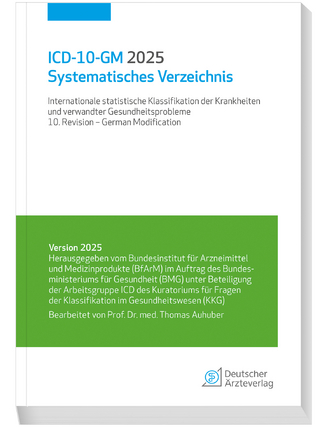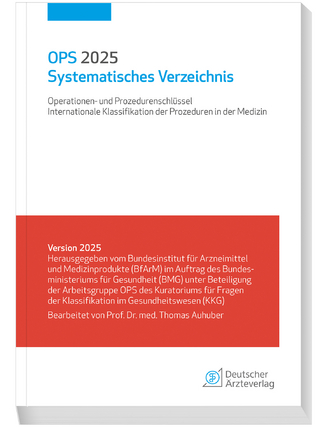
Clinical Ethics at the Crossroads of Genetic and Reproductive Technologies
Academic Press Inc (Verlag)
978-0-443-19045-2 (ISBN)
Sorin Hostiuc, MD, PhD, is Professor in the Department of Legal Medicine and Bioethics at Carol Davila University of Medicine and Pharmacy, Bucharest, Romania, and Senior Physician at the National Institute of Legal Medicine, Bucharest, Romania. Dr. Hostiuc has written extensively on topics such as informed consent, research ethics, history of medical ethics, and reproductive ethics, with more than 200 published articles in The Lancet, New England Journal of Medicine, PLOS ONE, Journal of Translational Medicine, and Frontiers in Neuroscience, among other journals. He has also published four monographs in Romanian dealing with bioethical issues: A Treaty of Medical and Dental Bioethics, Ethics of Scientific Research, Ethics of Scientific Publishing, and Informed Consent as well as a book about the history of informed consent in Europe. Dr. Hostiuc received his PhD in medicine and MD from Carol Davila University of Medicine and Pharmacy.
Contributors
1. Genomic editing: From human health to the “perfect child
Daniela Iancu
1. Introduction
1.1 Beginnings
1.2 Definitions and context
1.3 Recombinant DNA technology: The basis for DNA modification
1.4 Genome editing
1.5 Zinc finger nucleases (ZFNs)
1.6 CRISPR/Cas9 technology
1.7 Base editing technology
1.8 Principles of using genome editing in research and clinical practice
2. Ethical issues in clinical genome editing
2.1 Nonmaleficence and risk/benefit assessment
2.2 Beneficence in gene editing therapies
2.3 Respect for autonomy
2.4 Confidentiality
2.5 Applying the principle of justice in clinical genome editing
2.6 Eugenics, enhancement, and “designer babies
3. Conclusions
References
2. Ethics of mitochondrial gene replacement therapy
Rebecca Dimond
1. Introduction
2. What is mitochondrial disease and mitochondrial donation?
3. The UK timeline
4. The international position
5. Are the techniques safe?
6. Ethical issues
7. “Three parent babies and identity
8. Genetic modification and the “slippery slope
9. Risks for egg donors
10. Ethical differences between PNT and MST
11. Mitochondrial disease as complex: Diagnosis, predicting risk, and genetic counseling
12. Alternative reproductive options
13. Polar body transfer and gene editing
14. Conclusion
References
3. Reproductive technologies used by same-gender couples
Valentina Nastasel, Diana Badiu, and Vlad I. Tica
1. Introduction
2. Procreative autonomy
3. Gamete and embryo donation
4. Surrogacy agreement
5. Trans parenthood
6. Conscience clause
7. Conclusions
References
Further Reading
4. Ethical issues raised by multiparents
Maria Aluas
1. Introduction
1.1 Key terms of the debate: Filiation, kinship, and parenthood
2. Multiparents of children born through ARTs
2.1 Maternity
2.2 Paternity
3. Where do all these parents come from?
3.1 Sperm donation
3.2 Egg donation
3.3 Embryo donation
3.4 Surrogacy
4. Ethical issues
4.1 The right to know one’s origins
4.2 Donors’ anonymity
4.3 The consent of participants
5. Secondary ethical issues
5.1 Medical tourism
5.2 Slippery slope
6. Final considerations
References
5. Revisiting the nondirective principle of genetic counseling in prenatal screening
Oana-Maria Isaila
1. Introduction
2. Genetic counseling: An overview
3. The nondirective principle in genetic counseling
3.1 “Nondirectivity or “sharing decision-making?
3.2 The nondirective principle of genetic counseling in preimplantation screening
3.3 The nondirective principle of genetic counseling in prenatal screening
4. Does the nondirective principle compromise genetic counseling in prenatal screening?
5. Does genetic counseling in prenatal screening compromise the nondirective principle?
6. The concept of nondirectivity vs the role of genetic counseling
7. Activating the conscience clause in genetic counseling in prenatal screening?
8. Genetic counseling in prenatal screening in ethnic and cultural minorities
9. Medical tourism for abortion after genetic counseling
10. Issues of genetic counseling in prenatal screening
10.1 The absence of genetic counseling
10.2 The inappropriate genetic counseling
11. Final considerations
References
6. Sex selection, gender selection, and sexism
Iva Rincic, Amir Muzur, and Stephen O. Sodeke
1. Introduction
2. The roots and reasons for sex selection
3. From politics on reproduction to biopolicy
4. Missing girls: Why and how many?
5. Legal and ethical questions
6. Conclusion
References
7. The impact of Big Data on beginning-of-life issues
Dario Sacchini and Antonio G. Spagnolo
1. Introduction: First, what is really “Big Data?
2. Big Data and healthcare: An expanding universe
3. Big Data and Beginning-of-life issues: A field in its infancy
4. Conclusion: Work in progress
References
8. The moral status of the embryo and its uses: Bioethics and social perceptions
Rafael Pardo
1. Introduction
2. The empirical perspective in bioethics and public perceptions of science studies
3. The notion of moral status
4. Contrasting narratives on the moral status of the embryo
5. The status of the embryo frame and the beginning of individual human life
6. Views on the status of the embryo, religious beliefs, scientific literacy, and gender
7. Moral status and attitudes to embryo research
8. Conclusions
References
9. Fetal reduction
Ana S. Carvalho, Margarida Silvestre, Susana Magalhaes, and Joana Araujo
1. Bioethical issues of fetal reduction: Why words matter
1.1 Medical use: Selective fetal reduction
1.2 Medical use: Nonselective fetal reduction
1.3 Nonmedical uses: Selective fetal reduction
1.4 Nonmedical use: Nonselective fetal reduction
2. The moral status of embryo and fetus
3. Fetal reduction: “A soft cover for hard choices
4. Parental autonomy and parental responsibility
5. Conclusion
References
10. Stem cell therapies for neurodegenerative disorders: An ethical analysis
Sorin Hostiuc, Ionut Negoi, Mugurel Constantin Rusu, and Mihaela Hostiuc
1. Introduction
2. An overview on stem cell therapies for neurodegenerative disorders
2.1 Parkinson’s disease
2.2 Stem cell treatments for other neurological disorders
2.3 Use of placebo controls in sham surgery
3. Risk-to-benefit analysis for stem cell therapies in neurodegenerative disorders
3.1 What are the potential benefits of stem cell therapy in neurodegenerative disorders?
4. Induced pluripotent stem cell therapies for neurodegenerative disorders
5. Moral status of IPSCs
6. Conclusions
References
11. Predictive genetic testing in multifactorial disorders
Sorin Hostiuc
1. Introduction
2. Respect for autonomy
2.1 Delivering relevant information
2.2 Understanding relevant information
2.3 Capacity to act voluntarily
2.4 The concept of relational autonomy in predictive genetic testing
3. Nondirectiveness in predictive testing for multifactorial disorders
4. Direct-to-consumer genetic testing
5. When to recommend predictive genetic testing?
6. Nonmaleficence and risk assessment
7. Confidentiality and family sharing of the genetic results
8. Predictive genetic testing in children
9. Genetic exceptionalism and multifactorial disorders
10. Conclusions
References
12. Whole-genome sequencing as a method of prenatal genetic diagnosis
Fermın J. Gonzalez-Melado
1. Introduction
2. From the standard of prenatal diagnosis to whole-genome sequencing
3. Whole-genome sequencing as a prenatal diagnostic tool
3.1 What is whole-genome sequencing?
3.2 Whole-genome sequencing applications in prenatal diagnosis
3.3 Limitations of whole-genome sequencing
4. Ethical problems surrounding whole-genome sequencing
4.1 Large amounts of information
4.2 Anxiety and confusion in parents
4.3 Parents’ reproductive choices, expectations, and genetic determinism
4.4 Right of the parents to information vs right of the child to “Not to Know
5. The importance of pre-WGS test and post-WGS diagnostic counseling
5.1 Counseling in WGS
5.2 Pre-WGS test counseling
5.3 Post-WGS diagnostic counseling
5.4 Ethical reflection on WGS test in prenatal diagnosis
6. Conclusion
References
13. Noninvasive prenatal genetic diagnosis
Sorin Hostiuc
1. Introduction
2. High- versus low-risk populations
3. Reproductive autonomy
4. Counseling for NIPT
5. Should parents be allowed to get tested “for information only
5.1 A teleological approach to NIPT
6. NIPT and discrimination
7. Eugenics, procreative beneficence, and NIPT
8. Conclusions
References
14. Prenatal testing in low-risk populations: After routinization for aneuploidy
Jazmine L. Gabriel and Lauren Diskin
1. Introduction
2. Background on offering the test to low-risk women
3. Diagnostic test versus screening test
4. Reduced penetrance and variable expressivity
5. Negative test and healthy baby assumptions
6. Incidental findings: Maternal conditions
7. Ethics of testing just for information
8. Practical issues: Who will counsel patients?
9. OB/Gyn counseling
10. Information access outside of the United States
11. Problematic solutions
12. Linear model of information transmission
13. Justice issues: Access to testing
14. Conclusion
References
15. Using genetics for enhancement (liberal eugenics)
Sonja Pavlovic, Milena Ugrin, Vladimir Gasic, and Vojin Rakic
1. Introduction
1.1 Definition of enhancement
1.2 Types of enhancement
1.3 (How) should we distinguish enhancement from therapy?
2. Genetic enhancement
2.1 Genomics and epigenomics as base for genetic enhancement
2.2 High-throughput methodology for genome wide genetic, epigenetic, and gene expression profiling
2.3 Personalized medicine as a model for implementation of genetic enhancement
2.4 From predictive genomics to preventive medicine and genetic enhancement
2.5 Ethical issues in personalized medicine
2.6 Gene therapy, molecular-targeted therapy, and cellular therapy
2.7 Ethical aspects of gene therapy, molecular-targeted therapy, and cellular therapy
2.8 Gene enhancement, molecular-targeted enhancement, cellular enhancement
3. Liberal eugenics
4. Regulation, health coverage, and public opinion
5. Conclusion
Acknowledgments
References
16. Should incidental findings arising from prenatal testing be reported indiscriminately to patients?
Valentina Kaneva and Ina Dimitrova
1. Introduction
2. Incidental findings in the prenatal setting
2.1 Challenges of definition
2.2 Current practice, new developments, and specific features of the prenatal setting
3. Reporting incidental findings in the prenatal setting
3.1 Arguments pro disclosure
3.2 Arguments against disclosure
4. Handling incidental findings: Informed consent procedures and pretest counseling in genetic testing
5. Conclusion
References
17. Third-party sharing of genetic information
Beatrice Gabriela Ioan and Bianca Hanganu
1. Introduction
2. Disclosure of genetic data to relatives
2.1 Disclosure of genetic information by the patients to their biological relatives
2.2 Communication by parents of genetic information about their children
2.3 Refusal of the individuals to disclose genetic data to their biological relatives
2.4 Disclosure of information by the healthcare provider without the patient’s consent
3. Disclosure of genetic information to employers
4. Disclosure of genetic data to health insurance companies
5. Third-party sharing of genetic data in the context of biomedical research
5.1 Sharing data resulting from genetic testing with research entities
5.2 Disclosure of genetic data resulting from research to the participants’ relatives
6. Disclosure of data resulting from DTC genetic tests
7. Disclosure of data resulting from genetic interpretation services
8. Third-party sharing for forensic purposes
References
18. Cerebral and noncerebral organoids
Andrea Lavazza and Alice Andrea Chinaia
1. Stem cells applications: Organoids and brain organoids
1.1 Biological foundations
1.2 Brain organoids: What they are and what they recapitulate of the human brain
1.3 Applications and limitations
2. Ethical issues
2.1 Cell origins, biobanking, and usage of brain organoids
2.2 Nonhuman animals and grafted organoids
2.3 Consciousness and moral status
3. Final remarks
3.1 Brain organoids and society
3.2 Conclusions
References
19. Cognitive enhancement: Bioethical aspects
Laura Palazzani
1. Introduction
2. Libertarian and utilitarian theories
3. Personalist and egalitarian theories
4. Hidden risks of enhancement
5. Possible future regulation about enhancement
6. Conclusion
References
20. Risks and benefits of direct-to-consumer genetic testing in the reproductive context
Mariko Nakano-Okuno, Crystal Lederhos Smith, and Thomas May
1. Introduction
2. A brief history of DTC genetic testing
3. Current status of DTC genetic testing relevant to reproductive decisions
3.1 Physician involvement
3.2 DTC genomic platforms
3.3 Types of results provided
3.4 Concerns currently raised
4. Limits and risks
4.1 Limitation in detectable genes and variants
4.2 Variants of unknown significance
4.3 Accuracy (false positives and false negatives)
4.4 Varying interpretation
4.5 Risks of raw data interpretation
4.6 Privacy risks
5. Benefits
6. Ethical issues
6.1 Principlism approach to DTC genetic testing
6.2 Ethical challenges in DTC-based reproductive choices
7. Conclusion
References
21. Genetic immunization: Enhancement or public health measure?
Tess Johnson
1. Introduction
1.1 Definitions and background
1.2 Introducing a case study
2. Public health and ethics
2.1 Definition and goals
3. Moral concepts from public health ethics
3.1 Collective easy rescue
3.2 Public goods
3.3 Collective welfare
3.4 Distributive justice
4. Ethical analysis of genetic immunization
4.1 Stakeholders, harms and benefits
4.2 Distribution of stakeholder harms and benefits
4.3 Policy alternatives
5. Conclusions
References
Index Contributors
1. Genomic editing: From human health to the “perfect child
Daniela Iancu
1. Introduction
1.1 Beginnings
1.2 Definitions and context
1.3 Recombinant DNA technology: The basis for DNA modification
1.4 Genome editing
1.5 Zinc finger nucleases (ZFNs)
1.6 CRISPR/Cas9 technology
1.7 Base editing technology
1.8 Principles of using genome editing in research and clinical practice
2. Ethical issues in clinical genome editing
2.1 Nonmaleficence and risk/benefit assessment
2.2 Beneficence in gene editing therapies
2.3 Respect for autonomy
2.4 Confidentiality
2.5 Applying the principle of justice in clinical genome editing
2.6 Eugenics, enhancement, and “designer babies
3. Conclusions
References
2. Ethics of mitochondrial gene replacement therapy
Rebecca Dimond
1. Introduction
2. What is mitochondrial disease and mitochondrial donation?
3. The UK timeline
4. The international position
5. Are the techniques safe?
6. Ethical issues
7. “Three parent babies and identity
8. Genetic modification and the “slippery slope
9. Risks for egg donors
10. Ethical differences between PNT and MST
11. Mitochondrial disease as complex: Diagnosis, predicting risk, and genetic counseling
12. Alternative reproductive options
13. Polar body transfer and gene editing
14. Conclusion
References
3. Reproductive technologies used by same-gender couples
Valentina Nastasel, Diana Badiu, and Vlad I. Tica
1. Introduction
2. Procreative autonomy
3. Gamete and embryo donation
4. Surrogacy agreement
5. Trans parenthood
6. Conscience clause
7. Conclusions
References
Further Reading
4. Ethical issues raised by multiparents
Maria Aluas
1. Introduction
1.1 Key terms of the debate: Filiation, kinship, and parenthood
2. Multiparents of children born through ARTs
2.1 Maternity
2.2 Paternity
3. Where do all these parents come from?
3.1 Sperm donation
3.2 Egg donation
3.3 Embryo donation
3.4 Surrogacy
4. Ethical issues
4.1 The right to know one’s origins
4.2 Donors’ anonymity
4.3 The consent of participants
5. Secondary ethical issues
5.1 Medical tourism
5.2 Slippery slope
6. Final considerations
References
5. Revisiting the nondirective principle of genetic counseling in prenatal screening
Oana-Maria Isaila
1. Introduction
2. Genetic counseling: An overview
3. The nondirective principle in genetic counseling
3.1 “Nondirectivity or “sharing decision-making?
3.2 The nondirective principle of genetic counseling in preimplantation screening
3.3 The nondirective principle of genetic counseling in prenatal screening
4. Does the nondirective principle compromise genetic counseling in prenatal screening?
5. Does genetic counseling in prenatal screening compromise the nondirective principle?
6. The concept of nondirectivity vs the role of genetic counseling
7. Activating the conscience clause in genetic counseling in prenatal screening?
8. Genetic counseling in prenatal screening in ethnic and cultural minorities
9. Medical tourism for abortion after genetic counseling
10. Issues of genetic counseling in prenatal screening
10.1 The absence of genetic counseling
10.2 The inappropriate genetic counseling
11. Final considerations
References
6. Sex selection, gender selection, and sexism
Iva Rincic, Amir Muzur, and Stephen O. Sodeke
1. Introduction
2. The roots and reasons for sex selection
3. From politics on reproduction to biopolicy
4. Missing girls: Why and how many?
5. Legal and ethical questions
6. Conclusion
References
7. The impact of Big Data on beginning-of-life issues
Dario Sacchini and Antonio G. Spagnolo
1. Introduction: First, what is really “Big Data?
2. Big Data and healthcare: An expanding universe
3. Big Data and Beginning-of-life issues: A field in its infancy
4. Conclusion: Work in progress
References
8. The moral status of the embryo and its uses: Bioethics and social perceptions
Rafael Pardo
1. Introduction
2. The empirical perspective in bioethics and public perceptions of science studies
3. The notion of moral status
4. Contrasting narratives on the moral status of the embryo
5. The status of the embryo frame and the beginning of individual human life
6. Views on the status of the embryo, religious beliefs, scientific literacy, and gender
7. Moral status and attitudes to embryo research
8. Conclusions
References
9. Fetal reduction
Ana S. Carvalho, Margarida Silvestre, Susana Magalhaes, and Joana Araujo
1. Bioethical issues of fetal reduction: Why words matter
1.1 Medical use: Selective fetal reduction
1.2 Medical use: Nonselective fetal reduction
1.3 Nonmedical uses: Selective fetal reduction
1.4 Nonmedical use: Nonselective fetal reduction
2. The moral status of embryo and fetus
3. Fetal reduction: “A soft cover for hard choices
4. Parental autonomy and parental responsibility
5. Conclusion
References
10. Stem cell therapies for neurodegenerative disorders: An ethical analysis
Sorin Hostiuc, Ionut Negoi, Mugurel Constantin Rusu, and Mihaela Hostiuc
1. Introduction
2. An overview on stem cell therapies for neurodegenerative disorders
2.1 Parkinson’s disease
2.2 Stem cell treatments for other neurological disorders
2.3 Use of placebo controls in sham surgery
3. Risk-to-benefit analysis for stem cell therapies in neurodegenerative disorders
3.1 What are the potential benefits of stem cell therapy in neurodegenerative disorders?
4. Induced pluripotent stem cell therapies for neurodegenerative disorders
5. Moral status of IPSCs
6. Conclusions
References
11. Predictive genetic testing in multifactorial disorders
Sorin Hostiuc
1. Introduction
2. Respect for autonomy
2.1 Delivering relevant information
2.2 Understanding relevant information
2.3 Capacity to act voluntarily
2.4 The concept of relational autonomy in predictive genetic testing
3. Nondirectiveness in predictive testing for multifactorial disorders
4. Direct-to-consumer genetic testing
5. When to recommend predictive genetic testing?
6. Nonmaleficence and risk assessment
7. Confidentiality and family sharing of the genetic results
8. Predictive genetic testing in children
9. Genetic exceptionalism and multifactorial disorders
10. Conclusions
References
12. Whole-genome sequencing as a method of prenatal genetic diagnosis
Fermın J. Gonzalez-Melado
1. Introduction
2. From the standard of prenatal diagnosis to whole-genome sequencing
3. Whole-genome sequencing as a prenatal diagnostic tool
3.1 What is whole-genome sequencing?
3.2 Whole-genome sequencing applications in prenatal diagnosis
3.3 Limitations of whole-genome sequencing
4. Ethical problems surrounding whole-genome sequencing
4.1 Large amounts of information
4.2 Anxiety and confusion in parents
4.3 Parents’ reproductive choices, expectations, and genetic determinism
4.4 Right of the parents to information vs right of the child to “Not to Know
5. The importance of pre-WGS test and post-WGS diagnostic counseling
5.1 Counseling in WGS
5.2 Pre-WGS test counseling
5.3 Post-WGS diagnostic counseling
5.4 Ethical reflection on WGS test in prenatal diagnosis
6. Conclusion
References
13. Noninvasive prenatal genetic diagnosis
Sorin Hostiuc
1. Introduction
2. High- versus low-risk populations
3. Reproductive autonomy
4. Counseling for NIPT
5. Should parents be allowed to get tested “for information only
5.1 A teleological approach to NIPT
6. NIPT and discrimination
7. Eugenics, procreative beneficence, and NIPT
8. Conclusions
References
14. Prenatal testing in low-risk populations: After routinization for aneuploidy
Jazmine L. Gabriel and Lauren Diskin
1. Introduction
2. Background on offering the test to low-risk women
3. Diagnostic test versus screening test
4. Reduced penetrance and variable expressivity
5. Negative test and healthy baby assumptions
6. Incidental findings: Maternal conditions
7. Ethics of testing just for information
8. Practical issues: Who will counsel patients?
9. OB/Gyn counseling
10. Information access outside of the United States
11. Problematic solutions
12. Linear model of information transmission
13. Justice issues: Access to testing
14. Conclusion
References
15. Using genetics for enhancement (liberal eugenics)
Sonja Pavlovic, Milena Ugrin, Vladimir Gasic, and Vojin Rakic
1. Introduction
1.1 Definition of enhancement
1.2 Types of enhancement
1.3 (How) should we distinguish enhancement from therapy?
2. Genetic enhancement
2.1 Genomics and epigenomics as base for genetic enhancement
2.2 High-throughput methodology for genome wide genetic, epigenetic, and gene expression profiling
2.3 Personalized medicine as a model for implementation of genetic enhancement
2.4 From predictive genomics to preventive medicine and genetic enhancement
2.5 Ethical issues in personalized medicine
2.6 Gene therapy, molecular-targeted therapy, and cellular therapy
2.7 Ethical aspects of gene therapy, molecular-targeted therapy, and cellular therapy
2.8 Gene enhancement, molecular-targeted enhancement, cellular enhancement
3. Liberal eugenics
4. Regulation, health coverage, and public opinion
5. Conclusion
Acknowledgments
References
16. Should incidental findings arising from prenatal testing be reported indiscriminately to patients?
Valentina Kaneva and Ina Dimitrova
1. Introduction
2. Incidental findings in the prenatal setting
2.1 Challenges of definition
2.2 Current practice, new developments, and specific features of the prenatal setting
3. Reporting incidental findings in the prenatal setting
3.1 Arguments pro disclosure
3.2 Arguments against disclosure
4. Handling incidental findings: Informed consent procedures and pretest counseling in genetic testing
5. Conclusion
References
17. Third-party sharing of genetic information
Beatrice Gabriela Ioan and Bianca Hanganu
1. Introduction
2. Disclosure of genetic data to relatives
2.1 Disclosure of genetic information by the patients to their biological relatives
2.2 Communication by parents of genetic information about their children
2.3 Refusal of the individuals to disclose genetic data to their biological relatives
2.4 Disclosure of information by the healthcare provider without the patient’s consent
3. Disclosure of genetic information to employers
4. Disclosure of genetic data to health insurance companies
5. Third-party sharing of genetic data in the context of biomedical research
5.1 Sharing data resulting from genetic testing with research entities
5.2 Disclosure of genetic data resulting from research to the participants’ relatives
6. Disclosure of data resulting from DTC genetic tests
7. Disclosure of data resulting from genetic interpretation services
8. Third-party sharing for forensic purposes
References
18. Cerebral and noncerebral organoids
Andrea Lavazza and Alice Andrea Chinaia
1. Stem cells applications: Organoids and brain organoids
1.1 Biological foundations
1.2 Brain organoids: What they are and what they recapitulate of the human brain
1.3 Applications and limitations
2. Ethical issues
2.1 Cell origins, biobanking, and usage of brain organoids
2.2 Nonhuman animals and grafted organoids
2.3 Consciousness and moral status
3. Final remarks
3.1 Brain organoids and society
3.2 Conclusions
References
19. Cognitive enhancement: Bioethical aspects
Laura Palazzani
1. Introduction
2. Libertarian and utilitarian theories
3. Personalist and egalitarian theories
4. Hidden risks of enhancement
5. Possible future regulation about enhancement
6. Conclusion
References
20. Risks and benefits of direct-to-consumer genetic testing in the reproductive context
Mariko Nakano-Okuno, Crystal Lederhos Smith, and Thomas May
1. Introduction
2. A brief history of DTC genetic testing
3. Current status of DTC genetic testing relevant to reproductive decisions
3.1 Physician involvement
3.2 DTC genomic platforms
3.3 Types of results provided
3.4 Concerns currently raised
4. Limits and risks
4.1 Limitation in detectable genes and variants
4.2 Variants of unknown significance
4.3 Accuracy (false positives and false negatives)
4.4 Varying interpretation
4.5 Risks of raw data interpretation
4.6 Privacy risks
5. Benefits
6. Ethical issues
6.1 Principlism approach to DTC genetic testing
6.2 Ethical challenges in DTC-based reproductive choices
7. Conclusion
References
21. Genetic immunization: Enhancement or public health measure?
Tess Johnson
1. Introduction
1.1 Definitions and background
1.2 Introducing a case study
2. Public health and ethics
2.1 Definition and goals
3. Moral concepts from public health ethics
3.1 Collective easy rescue
3.2 Public goods
3.3 Collective welfare
3.4 Distributive justice
4. Ethical analysis of genetic immunization
4.1 Stakeholders, harms and benefits
4.2 Distribution of stakeholder harms and benefits
4.3 Policy alternatives
5. Conclusions
References
Index
| Erscheinungsdatum | 26.08.2023 |
|---|---|
| Verlagsort | San Diego |
| Sprache | englisch |
| Maße | 152 x 229 mm |
| Gewicht | 900 g |
| Themenwelt | Informatik ► Weitere Themen ► Bioinformatik |
| Naturwissenschaften ► Biologie ► Genetik / Molekularbiologie | |
| ISBN-10 | 0-443-19045-3 / 0443190453 |
| ISBN-13 | 978-0-443-19045-2 / 9780443190452 |
| Zustand | Neuware |
| Informationen gemäß Produktsicherheitsverordnung (GPSR) | |
| Haben Sie eine Frage zum Produkt? |
aus dem Bereich


